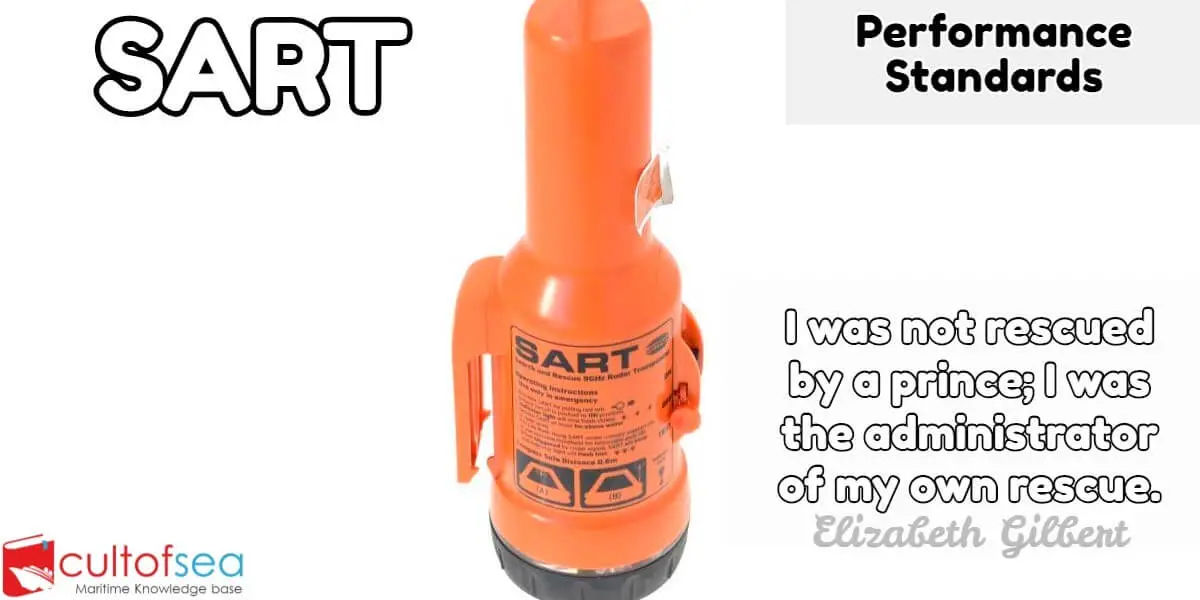Recommendation On Performance Standards For Survival Craft Radar Transponders For Use In Search And Rescue Operations
The SART should be capable of indicating the location of a unit in distress on the assisting unit’s radars by means of a series of equally spaced dots (resolution A.530(13)).
1. The SART should:
.1 be capable of being easily activated by unskilled personnel;
.2 be fitted with means to prevent inadvertent activation;
.3be equipped with a means which is either visual or audible or both visual and audible, to indicate correct operation and to alert survivors to the fact that a radar has triggered the SART;
.4 be capable of manual activation and deactivation; provision for automatic activation may be included
.5 be provided with an indication of the standby condition;
.6 be capable of withstanding without damage drops from a height of 20m into water;
.7 be watertight at a depth of 10m for at least 5min;
.8 maintain water tightness when subjected to a thermal shock of 45°C under specified conditions of immersion;
.9 be capable of floating if it is not an integral part of the survival craft;
.10 be equipped with buoyant lanyard, suitable for use as a tether, if it is capable of floating;
.11 not be unduly affected by seawater or oil;
.12 be resistant to deterioration in prolonged exposure to sunlight;
.13 be of a highly visible yellow/orange colour on all surfaces where this will assist detection;
.14 have a smooth external construction to avoid damaging the survival craft; and
.15be provided with a pole or other arrangement compatible with the antenna pocket in a survival craft
2. The SART should have sufficient battery capacity to operate in the standby condition for 96h and, in addition, following the stand-by period, to provide transponder transmissions for 8h when being continuously interrogated with a pulse repetition frequency of 1kHz.
3. The height of the installed SART antenna should be at least 1m above sea-level.
4. The vertical polar diagram of the antenna and hydrodynamic characteristics of the device should permit the SART to respond to search radars under heavy swell conditions. The polar diagram of the antenna should be substantially omnidirectional in the horizontal plane. Horizontal polarisation should be used for transmission and reception.
5. The SART should operate correctly when interrogated at a distance of up to at least 5 nautical miles by a navigational radar complying with resolutions A.477(XII) and A.222(VII), with an antenna height of 15m. It should also operate correctly when interrogated at a distance of up to 30 nautical miles by an airborne radar with at least 10kW peak output power at a height of 3000ft.
6. Labelling
The following should be clearly indicated on the exterior of the equipment:
.1 brief operating instructions; and
.2 expiry date for the primary battery used.

Leave a Reply